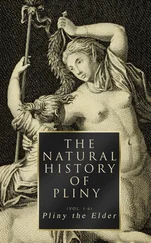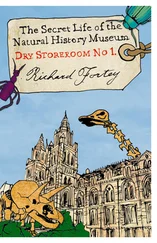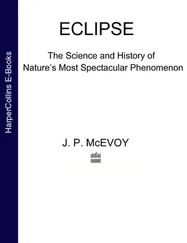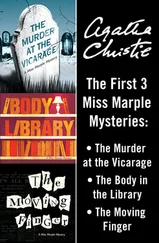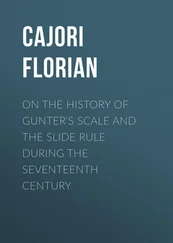As for the Grand Saphir (Figure 3.2), it was also set in gold as the royal inventories indicate. We have been able to undertake a gemological study since the original gem has been preserved today: it constitutes, along with the Hortensia diamond of the Louvre Museum, the only two remains of the fabulous gem acquisitions by Louis XIV that have been kept intact to date. UV-vis-NIR spectroscopic analysis (Farges et al . 2015) of this gem shows that the sapphire originated in Sri Lanka. We can even see growth zones and inclusions that allow us to conclude that this sapphire has not been heated to accentuate its blue color. The zonations show that the original crystal was much larger, but these extra volumes must have been less transparent and were removed by recutting.
In the end, it is astonishing that the two blue gems of Louis XIV ended up in the Muséum national d’Histoire naturelle : one intact and the other in the form of a lead cast, the original of which has definitely disappeared. To a certain extent, this long-ignored lead cast has become the “original” and its precise study shows that its creator – still unknown at this stage – wanted to keep the trace of exceptional expertise by making this historical replica. My very recent observation (end of 2018) of the surface of this lead cast would seem to indicate that the date “1806” is inscribed on it. This type of lead casting is usually done prior to a sale or re-cut so that the gem cutter can keep track of his excellence for future customers. If this hypothesis is true, this information would indicate the date of the recutting of the Louis XIV blue diamond, which corresponds exactly to the time window between the theft of the French diamond in Paris and the first appearance in London (1792–1812) of what would later be named the Hope diamond, now kept at the Smithsonian.

Figure 3.4. Optical principles of a generic faceted diamond explaining definition and measurement. © F. Farges/MNHN
COMMENT ON FIGURE 3.4.– (a) Measurement of the critical angle, θ2, for an air (1)/gem (2) interface (also called a diopter). For a light incidence (θ1) smaller than this angle, the diamond will behave like a transparent diopter. Otherwise, the facets of the gem will behave like mirrors: the light will be more absorbed and the color will be perceived as more intense (darker); (b) optical principles for three typical light paths; (c) computer simulation of the Louis XIV blue diamond on the basis of the MNHN inv. 50.165 cast and the color of the Hope diamond and then placed in a model of a setting according to the 1691 inventory .
3.4. Epilogue: toward a renaissance...
To free ourselves from the virtual, we have reconstructed the “almost real” diamond. The challenge is potentially expensive: if this mineral had actually existed, the price would have been stratospheric. However, another path was considered: cubic zirconia, ZrO 2, is a crystallized zirconium oxide that has optical properties (refractive index and optical dispersion) close enough to those of a diamond without costing a fortune. But no cubic zirconia has the “cold blue” color so typical of blue diamonds. On the contrary, they show “warm” blues matted with purplish red, which gives us the wrong idea of Louis XIV’s blue diamond. We then opted for a “physical” solution. Indeed, it is possible to give the illusion of a color by sputtering, that is, depositing metallic particles “nano-pulverized” at high temperature and under ultra-high vacuum on a substrate of colorless zirconia. The color – obtained by light scattering by this thin layer of nanoparticles – is adjustable according to the operating conditions (ultra-high vacuum, temperature, nature of the metal to be deposited, etc.). After 2 years of testing, a colorless zirconia cut with the exact shape and faceting of Louis XIV’s blue diamond was “nano-coated” on its surface: it almost perfectly reproduces the theoretical simulation of the original blue diamond (Escobar 2017). Moreover, this replica will soon be set in gold so that we can see this magnificent diamond again as it once appeared in the eyes of the Sun King: a political instrument in the colors of a brilliant monarch. As amazing as it stands, no gem cutter – even one with modern, digitally enhanced skills – would have dared to imagine such a level of sophistication.
Bapst, G. (1889). Histoire des Joyaux de la Couronne de France . Hachette, Paris.
Descartes, R. (1633). Traité du monde et de la lumière . Bobin et Le Gras, Paris.
Descartes, R. (1637). La Dioptrique . Maire, Leyden.
Escobar, N. (2017). Now there are near-perfect copies of the hope diamond. Smithsonian Magazine [Online]. Available at: https://www.smithsonianmag.com/smithsonian-institution/now-there-are-near-perfect-copies-hope-diamond-180967372/.
Farges, F. (2014). Les grands diamants de la Couronne de François Ier à Louis XVI. Versalia, 17, 55–78.
Farges, F., Sucher, S., Horovitz, H., Fourcault, J.-M. (2008). Deux découvertes majeures autour du “diamant bleu de la Couronne”. Revue de Gemmologie, 165, 17–24.
Farges, F., Vinson, J., Rehr, J.R., Post, J.E. (2012). The rediscovery of the “French Blue” diamond. Europhysics News , 43, 22–25.
Farges, F., Panczer, G., Benbalagh, N., Riondet, G. (2015). The Grand Sapphire of Louis XIV and the Ruspoli Sapphire. Gems & Gemology, 51, 392–409.
Fritsch, E. (1998). The nature of color in diamonds. In The Nature of Diamonds , Harlow, G. (ed.). Cambridge University Press, Cambridge.
Romé de l’Isle, J.M L. (1772). Essai de cristallographie . Didot jeune, Paris.
1 1 A period in French history under the rule of Louis XIII and Louis XIV. The period was known for the development of art and literature.
4
Rediscovering Human Mummies: Unpublished data on the Chachapoya Mummy Exhibited at the Musée de l’Homme
Aline THOMAS1, Arnaud ANSART2, Christophe BOU3, Jean-Bernard HUCHET3,4, Véronique LABORDE5, Samuel MERIGEAUD6 and Éloïse QUETEL7
1 EA – CNRS, Muséum national d’Histoire naturelle, Université Paris Diderot, France
2 Consultant
3 PACEA, UFR Sciences Odontologiques, CNRS – Université de Bordeaux, Pessac, France
4 AASPE, ISYEB – CNRS, Muséum national d’Histoire naturelle, Sorbonne Université, École Pratique des Hautes Études, Université des Antilles, Paris, France
5 DGDcoll, Muséum national d’Histoire naturelle, Paris, France
6 Clinique du Parc, Castelnau-le-Lez, France
7 Pôle Patrimoine, Sorbonne Université, Paris, France
As a biological, archaeological and ethnographic vestige, the mummy is at the intersection of multidisciplinary issues and requires the use of adapted tools and techniques. By presenting the work carried out on the Chachapoya mummy, an emblematic figure of the Musée de l’Homme , this chapter presents the means used to study the mummified human remains of the Muséum’s anthropological collections. After a brief historical review (chrono–cultural origin of the mummy, context of its discovery, its entry into collections, up to its current exhibition), this chapter puts forward for the first time an illustrated scientific assessment of the mummy, obtained by means of various analyses: bio-medical exploration (virtual autopsy by scanner imaging), comparative experimentation (cranial trepanation) and archeo-entomological study.
Читать дальше



